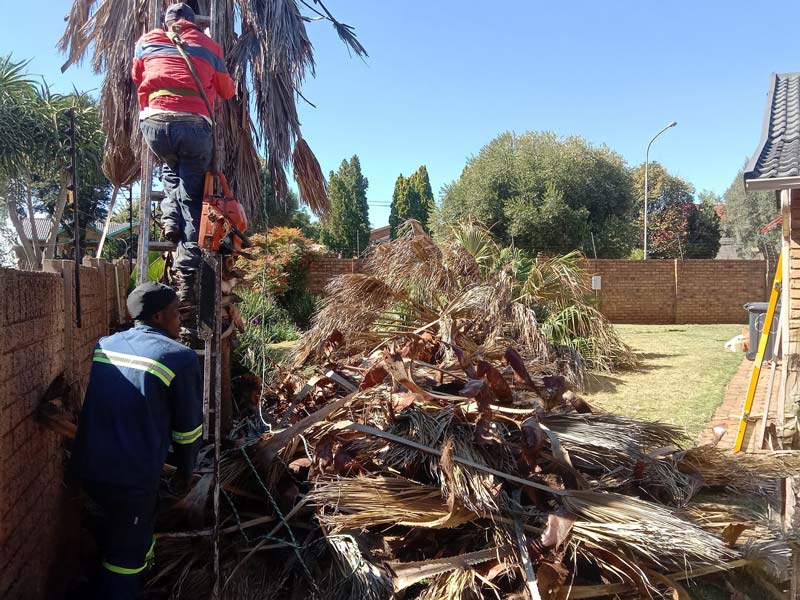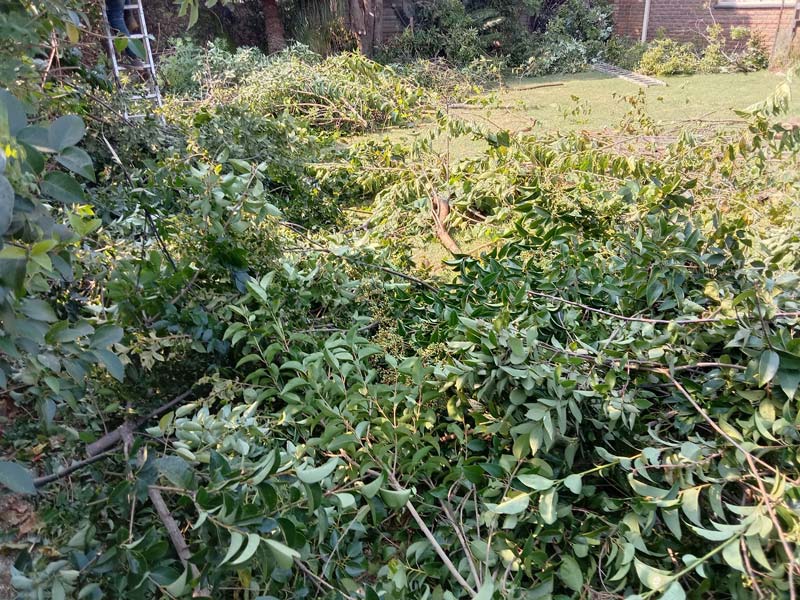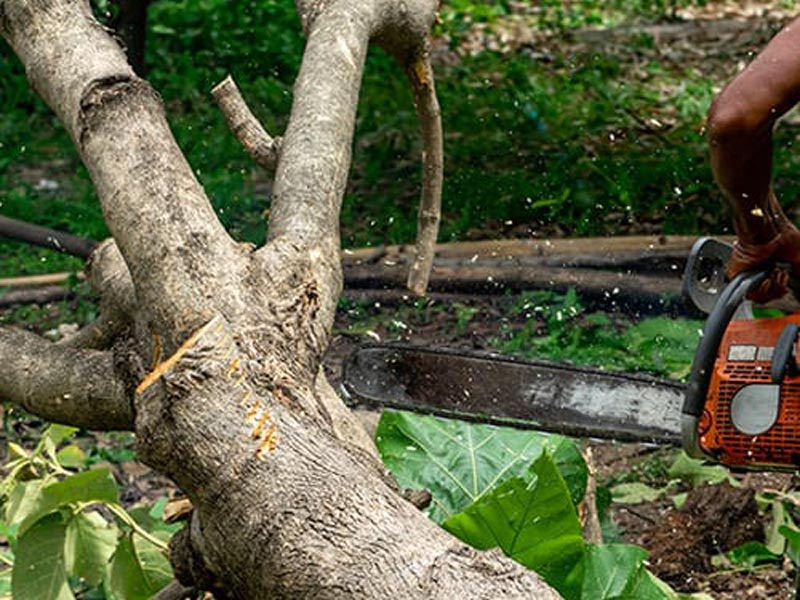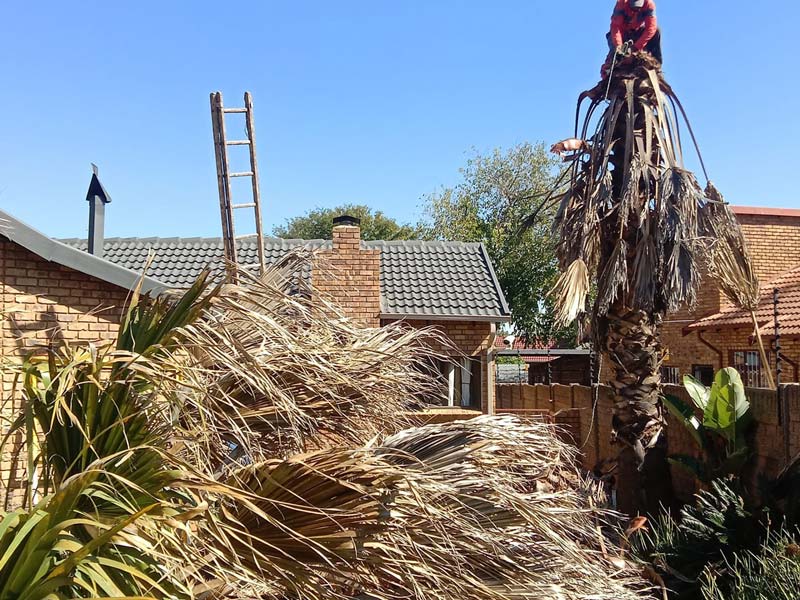Avoiding stubs and flush cuts on garden trees in Pretoria East is vital for maintaining tree health. Proper cuts should be made just outside the branch collar, preserving its integrity to promote effective healing. Tools should be sharp for clean cuts, minimising tissue damage. Furthermore, comprehending the timing of cuts can enhance recovery. It is important to monitor tree health post-pruning for any signs of infection. For further observations into effective pruning techniques, investigating additional resources can be beneficial.
Understanding Stubs and Flush Cuts
Regarding pruning trees, grasping the differences between flush cuts and stub cuts is crucial for maintaining tree health. Flush cuts are made too close to the trunk, damaging the branch collar and leading to decay and discolouration. Conversely, stub cuts leave a protruding segment that may initially remain alive but will eventually die, promoting decay and pathogen entry. Both improper pruning techniques delay tree compartmentalisation, impacting overall health. Comprehension of tree anatomy facilitates correct cutting practices that improve wounds’ closure and minimise infection risks. To protect your trees, consider employing qualified professionals to guarantee the best pruning methods are employed, as correct pruning practices can significantly reduce hazards and limit stress on trees. Furthermore, understanding the importance of tool hygiene ensures that tools used during pruning do not transfer diseases between trees.
The Importance of the Branch Collar
The branch collar plays a vital role in the overall health and recovery of trees after pruning. Proper cutting techniques that respect the branch collar are necessary, as they promote effective healing and minimise the risk of decay. Additionally, understanding the role of the branch collar helps ensure that trees can effectively defend against diseases and pests. Employing the expertise of certified experts can further enhance the pruning process and the well-being of your trees.
Branch Collar Functionality
Grasping the branch collar’s role is essential for anyone involved in tree care and maintenance. The branch collar, characterised by interlocking tissues, functions as a natural barrier against decay and pathogens, aiding in wound sealing and healing. Proper comprehension and maintenance of this structure is critical for tree health.
| Function | Description | Importance |
|---|---|---|
| Wound Compartmentalisation | Isolates wounds to prevent decay spread | Protects trunk health |
| Chemical Sealing | Produces compounds that seal wounds | Improves healing speed |
| Mechanical Support | Distributes branch load and tension | Strengthens junctions |
| Callus Formation | Promotes growth of protective tissue | Reduces infection risk |
| Defence Mechanism | Inhibits pathogen movement | Maintains tree integrity |
Correct Cutting Techniques
Recognising proper cutting techniques is crucial for guaranteeing the health of garden trees, particularly when it involves the branch collar.
Accurate identification of the collar, characterised by its swollen, raised area, is essential for ideal pruning strategies. Cuts should be made just outside the collar; doing so preserves protective tissues while improper cuts can weaken the tree’s defences.
Furthermore, comprehending appropriate cutting angles is critical, as branch characteristics vary by species. Sharp tools should always be used, as they promote clean cuts that improve healing.
Acquiring these techniques guarantees trees thrive, nurturing a sense of connection within the gardening community. Additionally, understanding the importance of targeted tree cutting can further enhance the health and safety of your garden trees.
Healing and Recovery Processes
Comprehending the role of the branch collar is crucial in the healing and recovery processes of garden trees. This swollen section, where the branch meets the trunk, plays an essential role in collar health and decay prevention.
The collar produces callus tissue, sealing wounds effectively while guarding against pests and pathogens. Maintaining the collar’s integrity during pruning allows trees to compartmentalise injuries and guarantees a quicker healing process.
Proper cuts that preserve collar tissue promote better structural support and longevity, reducing the risk of decay and increasing overall tree vitality. Proper care is critical for lasting tree health. Additionally, implementing safety measures during pruning can further enhance the health of the tree by ensuring that cuts are made correctly and without harm to the branch collar.
Proper Cutting Techniques to Avoid Damage
To achieve healthy growth and longevity in trees, employing proper cutting techniques is crucial. Precision in pruning safety is paramount; techniques such as the three-step pruning method can greatly improve tree aesthetics while minimising damage.
By making initial undercuts to prevent bark tearing and guaranteeing cuts are made just outside the branch collar, the tree can effectively seal wounds. Moreover, using the right tools for the job and maintaining sharpness guarantees clean cuts, promoting rapid healing. Additionally, implementing formal lines in your trimming approach can enhance the overall shape and appearance of your trees.
Emphasising these techniques not only preserves the tree’s beauty but also contributes to its overall health and resilience against pests and diseases.
Timing Your Cuts for Optimal Tree Health
When is the best moment to prune trees for their overall health and significance? Understanding pruning seasons and aligning with tree dormancy is fundamental. The ideal time for pruning deciduous trees is late winter, allowing for visible branches and minimal stress. During dormancy, trees heal wounds efficiently. For flowering and fruit trees, late winter to early spring maximises blooms and fruit quality. Immediate removal of dead or diseased branches is imperative regardless of the season. Following these guidelines encourages vigorous growth and improves tree vitality. Additionally, proper pruning techniques can help prevent hazardous tree conditions that may arise from improper cuts.
| Tree Type | Best Pruning Season | Benefits |
|---|---|---|
| Deciduous Trees | Late Winter | Reduced stress, better healing |
| Flowering Trees | Late Winter/Early Spring | Increased blooms |
| Fruit Trees | Late Winter/Early Spring | Improved fruit quality |
Common Mistakes to Avoid When Pruning
Pruning trees requires careful attention to technique to promote healthy growth and reduce the risk of decay or disease. Common mistakes in pruning can greatly impact tree health.
- Improper Cuts: Avoid flush and stub cuts, which hinder the tree’s healing process.
- Ignoring Nodes: Confirm cuts are made just above nodes to encourage healthy growth.
- Overpruning: Remove minimal foliage to maintain the tree’s liveliness.
- Consider Controlled Reduction Techniques: Implementing measured work can help reduce height while retaining healthy laterals.
Tools of the Trade: Ensuring Clean Cuts
Proper technique in pruning is only one part of maintaining the health of garden trees; the choice of tools greatly influences the outcome as well.
Selecting appropriate pruning tool types is crucial for achieving clean cuts and enhancing cutting efficiency. Bypass pruners excel in slicing branches up to ¾ inch, while loppers can handle larger limbs with ease. Pruning saws are essential for thicker branches, ensuring that cuts are smooth and promote healing. Additionally, proper waste management during pruning helps maintain a tidy garden environment and reduces fire risks.
Regular maintenance of these tools, including sharpening and cleaning, further guarantees peak performance, enabling gardeners to nurture healthy trees effectively and responsibly.
Post-Pruning Monitoring and Care
Post-pruning monitoring and care are essential for ensuring the long-term health of garden trees.
Regular assessments of pruning wounds can reveal signs of infection, such as discolouration or sap oozing, which may indicate stress or poor healing.
Effective moisture management, including maintaining soil moisture and applying mulch, is critical in promoting recovery and minimising further complications.
Wound Monitoring Techniques
Effective monitoring of wounds is essential for ensuring the long-term health of garden trees.
Employing appropriate wound assessment techniques, including visual and physiological symptom monitoring, helps identify stress early.
Key aspects may include:
- Observing for wilted or prematurely dropped leaves indicating healing issues.
- Keeping an eye on callus formation around cuts to assess healing progress.
- Looking out for signs of infection or pest activity that may compromise tree integrity.
Additionally, regular targeted cutting can promote healthier growth and reduce the likelihood of future complications.
Effective Moisture Management
Managing moisture effectively is vital for the recovery of garden trees following pruning. A balanced hydration strategy promotes moisture retention in the soil, aiding in the adjustment to reduced foliage.
It is important to implement deep watering techniques immediately after pruning to compensate for decreased water absorption. Monitoring soil moisture levels weekly guarantees that trees maintain an ideal hydration balance, avoiding the perils of root rot from overwatering or stress from dryness.
Utilising soaker hoses or drip irrigation facilitates effective watering without waterlogging. In the end, these practices support the tree’s rejuvenation and resilience during the challenging post-pruning recovery phase.






